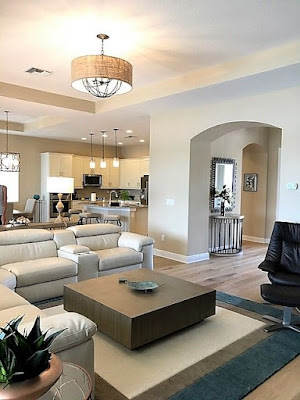Over the last 20 years or so, DIY has grown in popularity. But really, how easy is it to do it yourself?
From DIY shows that make decorating a home look as easy as pie to sites like Instagram, Pinterest, and Houzz, homeowners get an unrealistic idea of what it takes to successfully DIY their home décor. This leaves many people dispirited and dejected when their projects don’t come out as planned.
But this doesn’t mean all hope is lost. With the right planning and research, you can successfully tackle a home decorating project.
Planning & Research
It’s easy to see how DIY projects can take more time than people expect. Everything happens in a neat one-hour episode on TV, and most likely, you don’t get to see all the errors, false starts, and other roadblocks that delay a project.
In order to produce results that are in line with your expectations, planning and research are essential. To help you avoid mistakes and ensure the result is a home you love to show off, spend as much time as you can on the preparation stage. There’s nothing more satisfying than saying “I did that” to admiring guests.
Find Interior Design Inspiration
Inspiration is essential when considering a style for your home. Few things are worse than completing an extensive DIY project and realizing it is dated and going out of style. Base your decision on what you personally like as well as the trends. You want your home décor to be fresh and also timeless, which can be a challenging balancing act.
There are tons of places to look for inspiration, but Pinterest is a great place to start. Not only can you find a ton of ideas, but you can also save them on a Pinterest board, add ideas from other sites, and review what you’ve saved. Once you have your ideas organized, take a mental step back and check what you have. You should be able to see a trend in what you’ve chosen. Disregard the outliers and focus on the ones that have a common thread to find your style.
Flooring and Walls Create the Canvas
Now that you’ve discovered your inspiration, you need the perfect canvas to show it off. That means flooring and walls.
The floor and wall treatments can either overpower your DIY home decorating or give it the foundation it deserves. If you don’t want to commit to an entire room, you can add a designer look by using color or texture on a statement or feature wall.
When considering flooring, keep in mind that neutral colors will give the space a light, airy feel. Using the same flooring in several rooms offers a seamless, flowing look that can make smaller spaces seem larger. Choosing flooring with no pattern will allow other elements, such as furniture or cabinetry, to stand out in the space.
Choosing the Right Furniture
In most rooms, a big piece of the overall look is the furniture. It is by far the most significant investment and the most considerable influence in showcasing your style. If you are unsure of your ability to put pieces together, consider working with a furniture store that offers a free design service. Having all your ideas in one place and a fairly clear vision of what you want will help this process. You can even have someone step in with advice toward the end of your DIY home décor project to help you achieve a professional look.
Adding Accessories to Finish the Design
You’ll often hear designers say that accessories are the jewelry of design. The key to accessorizing space is finding balance. Throw pillows can highlight colors and bring texture into a room. Mirrors can brighten up a space and make it look bigger. Benches, ottomans, and poufs are a stylish way to add convenient, movable seating. While these items pull a design together, be careful when choosing them. Too many accessories can make a room feel cluttered.
These tips should give you plenty of interior design inspiration and keep your DIY design project on track. Doing your research and consulting a professional when you are in over your head is the recipe for a great design outcome.
Read Baer's Furniture reviews. Learn more about Baer's Furniture.


